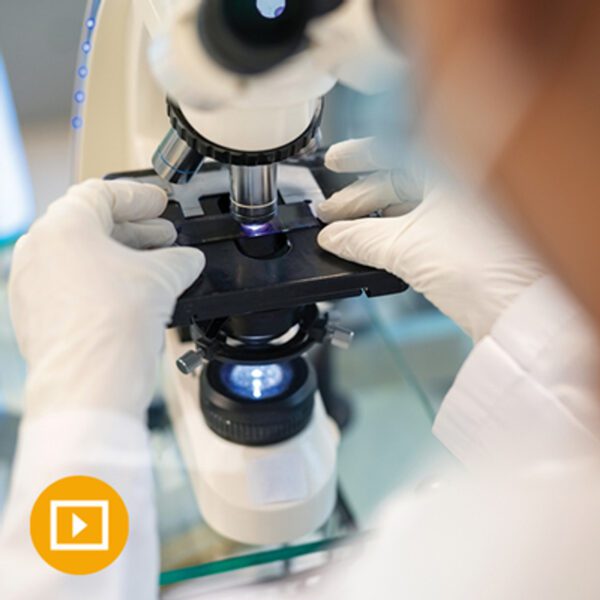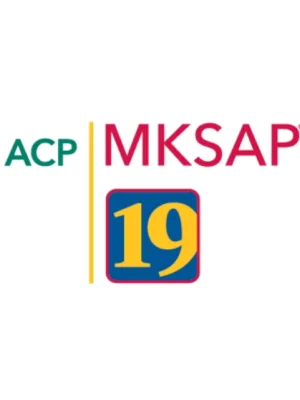No products in the cart.
Gastroenterology, Pathology
Oakstone Need-to-Know Pathology A Review for Physicians in a Hurry 2023
$30.00
+ Include: 132 videos + 2 pdfs, size: 21 GB
+ Target Audience: pathology residents/fellows
+ Include: 132 videos + 2 pdfs, size: 21 GB
+ Target Audience: pathology residents/fellows
+ Information:
Accreditation
Oakstone Publishing is accredited by the Accreditation Council for Continuing Medical Education (ACCME) to provide continuing medical education for physicians.
Designation
Oakstone Publishing designates this enduring material for a maximum of 60 AMA PRA Category 1 Credits™. Physicians should claim only the credit commensurate with the extent of their participation in the activity.
This activity meets the American Board of Pathology’s (ABPath) Continuing Certification program requirements for Part II (CME) Lifelong Learning.
Date of Original Release: February 15, 2023
Estimated Time to Complete: 60 hours
CME credit is awarded upon successful completion of a course evaluation and post-test.
Learning Objectives
At the completion of this course, you should be able to:
List high yield concepts within anatomic pathology, including recognition and subclassification of neoplasms of the breast, skin, gastrointestinal tract, hepatobiliary tract, soft tissue, bone, head and neck, heart, lung, kidney, male and female reproductive tracts, and brain
Discuss mesenchymal and hematopoietic neoplasms, including those involving children. Explain basic concepts in placental pathology, with a focus on high yield material for the board examination
Describe concepts of laboratory management and explain their utilization in healthcare, specifically with transfusion medicine/blood baking, chemistry, hematology (including hemoglobinopathies), coagulation, immunology, microbiology (including bacteriology, virology, parasitology), and molecular techniques ranging from cytogenetics to next generation sequencing
Target Audience
This course is designed for pathology residents/fellows preparing for their specialty examinations, as well as practicing pathologists who wish to fulfill the American Board of Pathology’s (ABPath) Continuing Certification program requirements for Part II (CME) Lifelong Learning, or update their knowledge in general.
+ Topics:
Anatomic Pathology
Dermatopathology I – Infectious Diseases of the Skin – Jerad Gardner, MD
Dermatopathology II – Inflammatory Dermpath – Patterns and Terminology – Jerad Gardner, MD
Dermatopathology III – Skin Adnexal Tumors – Jerad Gardner, MD
Dermatopathology IV – Miscellaneous Dermpath – Jerad Gardner, MD
Breast Pathology I – Architecture-based Approach to Breast Board Review – Marissa White, MD
Breast Pathology II – Board Review of Breast Cancer Staging and Prognostication – Marissa White, MD
Cardiovascular Pathology – The Endomyocardial Biopsy – Melanie Bois, MD
Cardiovascular Pathology – Valves, Vasculitis, and Tumors – Melanie Bois, MD
Thoracic Pathology I – Neoplastic Lung – Mitra Mehrad, MD
Thoracic Pathology II – Neoplastic Pleura – Mitra Mehrad, MD
Thoracic Pathology III – Non-Neoplastic Lung Disease – Mitra Mehrad, MD
Head and Neck Pathology I – Squamous Lesions – Lisa M. Rooper, MD
Head and Neck Pathology II – Thyroid Tumors – Lisa M. Rooper, MD
Head and Neck Pathology III – Sinonasal Tumors – Lisa M. Rooper, MD
Head and Neck Pathology IV – Salivary and Miscellaneous – Lisa M. Rooper, MD
Gastrointestinal Pathology I – High Yield Esophageal Pathology – Kristen M. Stashek, MD
Gastrointestinal Pathology II – High Yield Gastric Pathology – Kristen M. Stashek, MD
Gastrointestinal Pathology III – High Yield Small Intestinal Pathology – Kristen M. Stashek, MD
Gastrointestinal Pathology IV – High Yield Colon Pathology I – Non-neoplastic – Kristen M. Stashek, MD
Gastrointestinal Pathology V – High Yield Colon Pathology II – Neoplastic – Kristen M. Stashek, MD
Gastrointestinal Pathology VI – High Yield Ampulla, Appendix, and Anal Canal Pathology – Kristen M. Stashek, MD
Gastrointestinal Pathology VII – High Yield Pancreas Pathology – Kristen M. Stashek, MD
Hepatobiliary Pathology I – Medical Liver – Kathleen Byrnes, MD
Hepatobiliary Pathology II – Neoplastic Liver – Kathleen Byrnes, MD
Medical Renal Pathology I – Jonathan Zuckerman, MD, PhD
Medical Renal Pathology II – Jonathan Zuckerman, MD, PhD
Genitourinary Pathology I – Kidney – Andres Matoso, MD
Genitourinary Pathology II – Bladder – Andres Matoso, MD
Genitourinary Pathology III – Penis and Scrotum – Andres Matoso, MD
Genitourinary Pathology IV – Testis – Andres Matoso, MD
Genitourinary Pathology V – Prostate – Andres Matoso, MD
Gynecologic Pathology I – Maryam Shahi, MD
Gynecologic Pathology II – Maryam Shahi, MD
Gynecologic Pathology III – Maryam Shahi, MD
Gynecologic Pathology IV – Maryam Shahi, MD
Gynecologic Pathology V – Maryam Shahi, MD
Vasculopathic Placental Pathology: Maternal and Fetal Malperfusion – Drucilla Roberts, MD
Placental Pathology in Multigestation – Drucilla Roberts, MD
Placental Infections – Drucilla Roberts, MD
Pediatric Pathology I – Neuroblastoma – From Morphology to Molecular Pathology – An Update Based on the WHO PAED5 – Miguel Reyes-Múgica, MD
Pediatric Pathology II – Diagnosing Hirschsprung Disease – How to Avoid Trouble – Miguel Reyes-Múgica, MD
Pediatric Pathology – High Yield Entities for Anatomic Pathology Boards Session 1 – GI and Liver – Amy Treece, MD
Pediatric Pathology – High Yield Entities for Anatomic Pathology Boards Session 2 – Kidney and Lung – Amy Treece, MD
Pediatric Pathology – High Yield Entities for Anatomic Pathology Boards Session 3 – SRBCTs – Amy Treece, MD
Pediatric Pathology – High Yield Entities for Anatomic Pathology Boards Session 4 – Soft Tissue and Bone – Amy Treece, MD
Bone Pathology I – John M. Gross, MD
Bone Pathology II – John M. Gross, MD
Soft Tissue Pathology I – John M. Gross, MD
Soft Tissue Pathology II – John M. Gross, MD
Soft Tissue Pathology III – John M. Gross, MD
Neuropathology I – Xinhai Robert Zhang, MD, PhD
Neuropathology II – Xinhai Robert Zhang, MD, PhD
Neuropathology III – Xinhai Robert Zhang, MD, PhD
Neuropathology IV – Xinhai Robert Zhang, MD, PhD
Forensic Pathology I – Stephanie Dean, MD
Forensic Pathology II – Stephanie Dean, MD
Gynecologic Cytopathology I – Benign and Reactive Lesions – Christopher J. VandenBussche, MD, PhD
Gynecologic Cytopathology II – Squamous Lesions – Christopher J. VandenBussche, MD, PhD
Gynecologic Cytopathology III – Glandular and Unusual Lesions – Christopher J. VandenBussche, MD, PhD
Gynecologic Cytopathology IV – Special Topics – Christopher J. VandenBussche, MD, PhD
Non-Gynecologic Exfoliative Cytopathology I – Serous Fluids – Christopher J. VandenBussche, MD, PhD
Non-Gynecologic Exfoliative Cytopathology II – Urine – Christopher J. VandenBussche, MD, PhD
Non-Gynecologic Exfoliative Cytopathology III – Lung and Cerebrospinal Fluid – Christopher J. VandenBussche, MD, PhD
Fine Needle Aspiration Cytopathology I – Salivary Gland – Christopher J. VandenBussche, MD, PhD
Fine Needle Aspiration Cytopathology II – Thyroid and Head & Neck – Christopher J. VandenBussche, MD, PhD
Fine Needle Aspiration Cytopathology III – Liver and Pancreas – Christopher J. VandenBussche, MD, PhD
Fine Needle Aspiration Cytopathology IV – Miscellaneous – Christopher J. VandenBussche, MD, PhD
Hematopathology – Lymph Nodes – Hodgkin Lymphomas – Madhurima Koka, MD PhD
Hematopathology – Lymph Nodes – CD5+ Low-grade B-cell Lymphomas – Madhurima Koka, MD PhD
Hematopathology – Lymph Nodes – Follicular Lymphoma – Madhurima Koka, MD PhD
Hematopathology – Lymph Nodes – Post Germinal Center Low-Grade B-cell Malignancies – Madhurima Koka, MD PhD
Hematopathology – Lymph Nodes – Aggressive B-cell Lymphomas – Madhurima Koka, MD PhD
Hematopathology – Lymph Nodes – T-cell Lymphomas – Madhurima Koka, MD PhD
Hematopathology – Lymph Nodes – Reactive Lymphadenopathy – Madhurima Koka, MD PhD
Bone Marrow Pathology I – Zeba Singh, MBBS
Bone Marrow Pathology II – Zeba Singh, MBBS
Bone Marrow Pathology III – Zeba Singh, MBBS
Bone Marrow Pathology IV – Zeba Singh, MBBS
Bone Marrow Pathology V – Zeba Singh, MBBS
Bone Marrow Pathology VI – Zeba Singh, MBBS
Bone Marrow Pathology VII – Zeba Singh, MBBS
Bone Marrow Pathology VIII – Zeba Singh, MBBS
Clinical Pathology
Transfusion Medicine I – Blood Donor Qualifications and Exclusions, Key Blood Component Facts – Eric Gehrie, MD
Transfusion Medicine II – Immunohematology Background – Eric Gehrie, MD
Transfusion Medicine III – Compatibility Testing and Minor Red Blood Cell Antibodies, Recipient Complications – Eric Gehrie ,MD
Transfusion Medicine IV – Massive Transfusion, Whole Blood – Eric Gehrie, MD
Transfusion Medicine V – Apheresis – Eric Gehrie, MD
Transfusion Medicine VI – Immune Hemolytic Anemias – Eric Gehrie, MD
Transfusion Medicine VII – Thromboietin and TPO-mimetics – Eric Gehrie, MD
Transfusion Medicine VIII – Cellular Therapies – Eric Gehrie, MD
Chemistry I – Pre-Analytical Variables and Analytical Methods – Stefani Thomas, PhD, DABCC, NRCC
Chemistry II – Acid-Base, Electrolytes, and Tumor Markers – Stefani Thomas, PhD, DABCC, NRCC
Chemistry III – Toxicology, Therapeutic Drug Monitoring, and Liver – Stefani Thomas, PhD, DABCC, NRCC
Chemistry IV – Endocrinology – Adrenal and Pituitary – Stefani Thomas, PhD, DABCC, NRCC
Chemistry V – Diabetes and Renal Function – Stefani Thomas, PhD, DABCC, NRCC
Chemistry VI – Lipids and Proteins – Stefani Thomas, PhD, DABCC, NRCC
Chemistry VII – Thyroid, Newborn Screening, and Inborn Errors of Metabolism – Stefani Thomas, PhD, DABCC, NRCC
Chemistry VIII – Catecholamines, Porphyrins, and Vitamins – Stefani Thomas, PhD, DABCC, NRCC
Hematology I – Garrett S. Booth, MD
Hematology II – Garrett S. Booth, MD
Benign White Blood Cell Disorders I – Garrett S. Booth, MD
Benign White Blood Cell Disorders II – Garrett S. Booth, MD
Coagulation I – Physiology of Hemostasis – Geoffrey Wool, MD, PhD
Coagulation II – Laboratory Assays – Geoffrey Wool, MD, PhD
Coagulation III – Anticoagulation and its Monitoring – Geoffrey Wool, MD, PhD
Coagulation IV – Bleeding and Clotting Disorders – Geoffrey Wool, MD, PhD
Introduction to Immunology – Laura Wake, MD
Flow Cytometry I – Laura Wake, MD
Flow Cytometry II – Laura Wake, MD
Clinical Cytogenomics I – Ying Zou, MD, PhD, FACMG
Clinical Cytogenomics II – Ying Zou, MD, PhD, FACMG
Molecular Pathology I – DNA (Gene) Structure and DNA Mutation – Jialing Huang, MD, PhD
Molecular Pathology II – Molecular Diagnostics – Jialing Huang, MD, PhD
Bacteriology I – Gram-Positive Cocci – Alexander J. Fenwick, MD, FCAP
Bacteriology II – Gram-Positive Rods – Alexander J. Fenwick, MD, FCAP
Bacteriology III – Gram-Negative Rods – 1 – Alexander J. Fenwick, MD, FCAP
Bacteriology IV – Gram-Negative Rods – 2 – Alexander J. Fenwick, MD, FCAP
Bacteriology V – Gram-Negative Cocci & Others – Alexander J. Fenwick, MD, FCAP
Bacteriology VI – Agents of BT – Alexander J. Fenwick, MD, FCAP
Mycobacteriology – Alexander J. Fenwick, MD, FCAP
Mycology I – Thermal Dimorphs – Alexander J. Fenwick, MD, FCAP
Mycology II – Mucorales, Hyaline Hyphomycetes – Alexander J. Fenwick, MD, FCAP
Mycology III – Dematiaceous Fungi, Dermatophytes – Alexander J. Fenwick, MD, FCAP
Parasitology I – Protozoa – Alexander J. Fenwick, MD, FCAP
Parasitology II – Nematodes, Trematodes, Cestodes – Alexander J. Fenwick, MD, FCAP
Virology I – Respiratory, GI, Hepatitis – Alexander J. Fenwick, MD, FCAP
Virology II – HIV, Mucocutaneous, Rabies, Arboviruses – Alexander J. Fenwick, MD, FCAP
Antibiotic Susceptibility Testing – Alexander J. Fenwick, MD, FCAP
Laboratory Management I – Stefani Thomas, PhD, DABCC, NRCC
Laboratory Management II – Stefani Thomas, PhD, DABCC, NRCC
Laboratory Mathematics and Statistics I – Stefani Thomas, PhD, DABCC, NRCC
Laboratory Mathematics and Statistics II – Stefani Thomas, PhD, DABCC, NRCC





